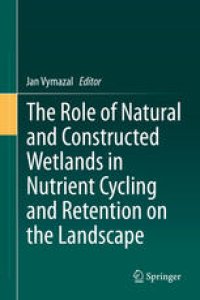
Ebook: The Role of Natural and Constructed Wetlands in Nutrient Cycling and Retention on the Landscape
Author: Jan Vymazal (eds.)
- Tags: Waste Water Technology / Water Pollution Control / Water Management / Aquatic Pollution, Applied Ecology, Environmental Management
- Year: 2015
- Publisher: Springer International Publishing
- Edition: 1
- Language: English
- pdf
Natural and constructed wetlands play a very important role on the landscape and their ecological services are highly valuable. In fact, some wetland types are regarded as one of the most valuable ecosystems on the Earth. Water management, including flood water retention, biomass production, carbon sequestration, wastewater treatment and biodiversity sources, are among the most important ecological services of wetlands. The book is aimed at the use of constructed wetlands for wastewater treatment and for the evaluation of various ecosystem services of natural wetlands. Special attention is paid to the role and potential use of wetlands on the agricultural landscape. The book presents up-to-date results of ongoing research and the content of the book could be used by wetland scientists, researchers, engineers, designers, regulators, decision-makers, universities teachers, landscape engineers and landscape planners as well as by water authorities, water regulatory offices or wastewater treatment research institutions.
Natural and constructed wetlands play a very important role on the landscape and their ecological services are highly valuable. In fact, some wetland types are regarded as one of the most valuable ecosystems on the Earth. Water management, including flood water retention, biomass production, carbon sequestration, wastewater treatment and biodiversity sources, are among the most important ecological services of wetlands. The book is aimed at the use of constructed wetlands for wastewater treatment and for the evaluation of various ecosystem services of natural wetlands. Special attention is paid to the role and potential use of wetlands on the agricultural landscape. The book presents up-to-date results of ongoing research and the content of the book could be used by wetland scientists, researchers, engineers, designers, regulators, decision-makers, universities teachers, landscape engineers and landscape planners as well as by water authorities, water regulatory offices or wastewater treatment research institutions.